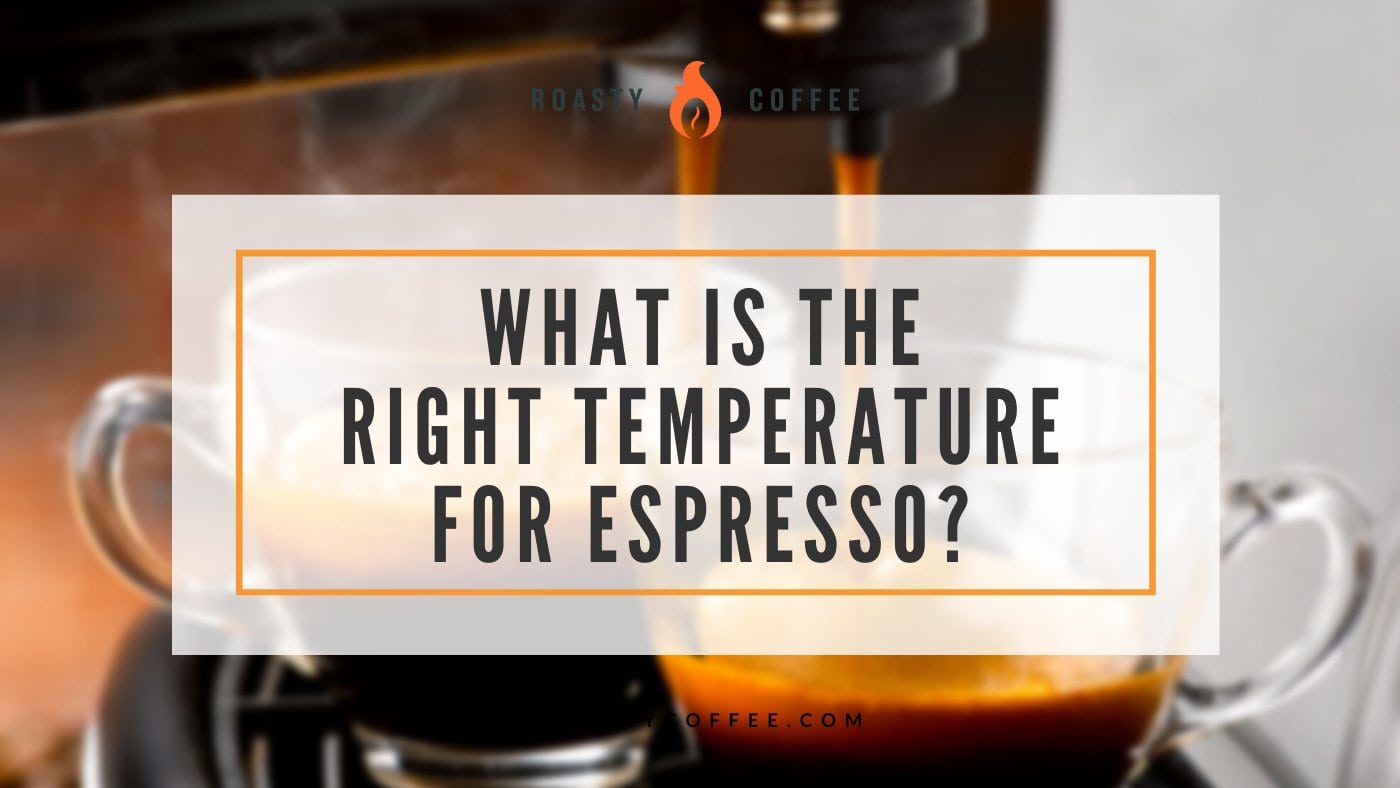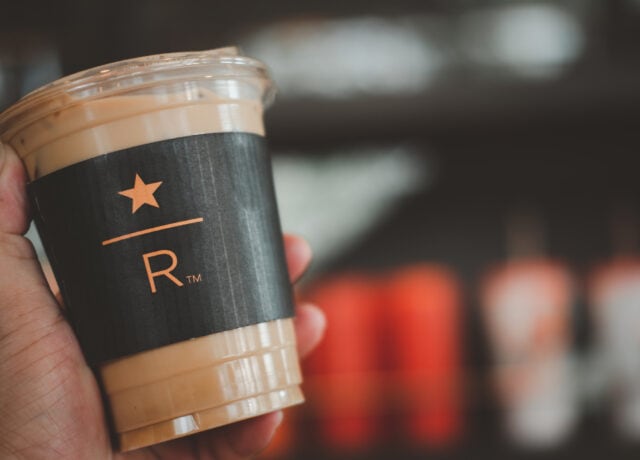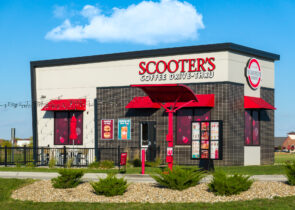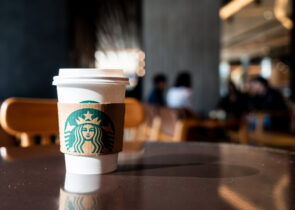Making the perfect cup of coffee is an exact science, meaning you need to consider a range of factors to avoid brewing disappointment. Things like coffee grind size, coffee-to-water ratio, coffee roast level, brew time, and amount of pressure matter, especially when pulling pro shots.
For now, our focus is on temperature — what the most effective brewing temperature is, why it matters, and how to measure it. Let’s consider these factors below!

What Is Espresso?
Before we dive into the effects of temperature during brewing espresso, we need to clarify what espresso is and what it’s not.
Espresso is rich, concentrated coffee served in one-ounce servings called shots. Some believe it’s the type of coffee beans that make it espresso, but that isn’t the case.
Any beans, regardless of origin or roast level, can make espresso if you grind them finely. The brewing method distinguishes espresso from regular drip coffee.
According to the Specialty Coffee Association, there are specific criteria coffee has to meet while brewing to be considered espresso:
- At least nine to 10 atmospheres of pressure push the water through the coffee grounds
- The water filtered through the coffee grounds must reach temperatures between 195 and 205 degrees Fahrenheit (90 to 96 degrees Celsius)
- Seven to nine grams of coffee grounds are brewed
- The resulting brew is 25 to 35 milliliters (0.85 to 1.2 ounces)
Even though it’s always brewed hot, a shot of espresso can be enjoyed hot or iced, alone or with milk. It’s the base of many drinks beloved by coffee lovers, like lattes, cappuccinos, and cortados.
How Does Temperature Affect an Espresso Shot?
The SCA is specific about espresso’s brew temperature, but the organization isn’t just being nitpicky. Brewing temperature matters if your goal is to pull perfect espresso shots.
Temperature impacts the following elements:
Espresso Coffee Taste
Hotter water usually leads to full-bodied, sweet brews. But you have to be careful; if the water temperature is too high, you’ll end up with bitter coffee. Cooler temperatures produce bright, acidic shots.
Again, you have to find the right balance; if the brewing temperature is too cold, your cups of coffee will taste sour.
Further complicating things is that you have to adjust water temperature settings according to your coffee’s roast level. Light roasts thrive with higher temperatures.
The heat brings out the coffee’s sweetness and body, balancing its acidity well. Medium and darker roasts are better suited for colder brew temperatures; cooling things down unleashes their acidity and subtler flavor notes.
Flow Rates
Water temperature during brewing impacts flow rates, or the time it takes water to pass through the ground coffee and drip into the cup. Water at a hotter temperature slows the flow rate and creates a more concentrated beverage.
On the other hand, colder water leads to faster flow rates and shots that are weaker in comparison.
Extraction Yield
Coffee experts have found that temperature is critical in determining the espresso extraction yield (the solubles dissolved during the brewing process and the weight of the espresso in the cup).
Higher temps equal higher extraction yields, or more water pushed through the coffee. Lower temperatures produce the opposite result: a lower extraction yield — less water flowing through the finely ground coffee.
An espresso coffee shot’s extraction yield matters because it determines how strong (in terms of flavor) your drink will be.
Because there is less water to dilute the espresso, lower extraction yields create stronger-tasting coffee. Shots with higher extraction yields taste weaker since more water was pushed through the grounds.
How to Measure Water Temperature
Water temperature plays a critical role in espresso extraction, so you’ll need some way to monitor and control it. There are three types of temperature control for espresso machines: mechanical thermostats, pressure stats, and PID controllers.
Mechanical Thermostats
You’ll commonly find mechanical thermostats on single-boiler espresso coffee machines like the Rancilio Silvia.
Mechanical thermostats have heat ratings — temperatures at which the machine’s heating element stops. When the brewer reaches the thermostat’s set rating, its heating element shuts off.
Unfortunately, the heating element doesn’t automatically cool down when it shuts off. It still transfers heat to the boiler, which can overheat the water and over-extract the espresso shot.
This lack of temperature consistency during extraction makes mechanical thermostats the least preferable way to measure temperature.
Temperature Surfing
A mechanical thermostat doesn’t mean you’re doomed to a lifetime of crappy coffee. A patient barista can make this tool work for them through temperature surfing.
In a nutshell, temperature surfing is guessing when a machine has reached the optimal brew temperature based on machine cues (like when a light shuts off, for instance) during the heating cycle.
There is no one-size-fits-all approach to temperature surfing, though. While one machine may reach the perfect temperature for brewing 30 seconds after a cue, another may not get there until 10 seconds later.
Pressure Stats
Pressure stats — Pstats for short — use pressure to control an espresso machine’s boiler temperature.
Two parts, the rubber diaphragm, and the electrical switch, make up the Pstat. As the temp rises, so does the pressure, increasing enough to push on the diaphragm and open the switch.
As things begin cooling down, the pressure decreases, and the switch closes. Then, the heating element fires up again, starting the cycle over again.
Pstat users can adjust their pressure stat according to their preferences, with most people choosing to set theirs to open at one bar.
PID Controllers
A Proportional Integrative Derivative (PID) controller’s purpose is to ensure temperature stability.
Without a PID installed, espresso machines work like household thermostats; when the heating element reaches the desired temp, it shuts off. Then, when the temperature drops again, the heating element kicks back on.
The coffee maker’s temperature fluctuation leads to inconsistent shot quality. However, when a PID controller is involved, the extraction temperature remains constant, thanks to the PID algorithm. So, with one of these tools, you’ll pull more consistent shots.
Frequently Asked Questions
What is the optimal extraction temperature for coffee?
Regular coffee’s optimal temperature range during brewing is no different than espresso’s; stay between 195 and 205 degrees Fahrenheit for best results.
What up to what temperature should you steam milk?
You should not only pay attention to the water temperature when brewing espresso; you should also monitor the temperature of the milk you add to it when making an espresso-based beverage, like a latte or cappuccino.
Steamed milk’s ideal temperature is debatable. However, most agree you should stay within the 130- to 150-degree (Fahrenheit) range to keep the milk from losing its natural sweetness and taking on a burnt flavor.
Does espresso extraction temperature affect crema?
Some coffee lovers say crema — the layer of flavorful foam formed during extraction that tops an espresso shot — is the mark of a good espresso shot.
Several factors impact crema, like:
- The type of coffee beans used and their roast level
- The beans’ freshness
- The water temperature during extraction
If water temperatures are too low, you’ll end up with disappointing, barely-there crema. On the other hand, too-high water temperatures create super dark crema with a white spot or black hole in the center. It’ll taste bitter and burnt — not what you want in your cup.
Stick to the Ideal Water Temperature While Brewing
As we said before, making the perfect espresso is a science, and water temperature is an important part of it.
For best results, stay within the 195- to 205-degree range, and be prepared to experiment with different temps based on the kind of beans you use and their roast levels, and how strong you want your brew to be.
Happy Caffeinating!







